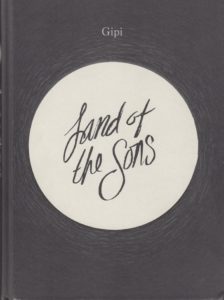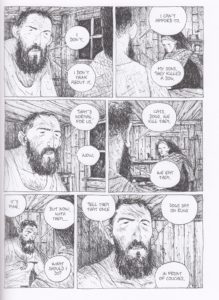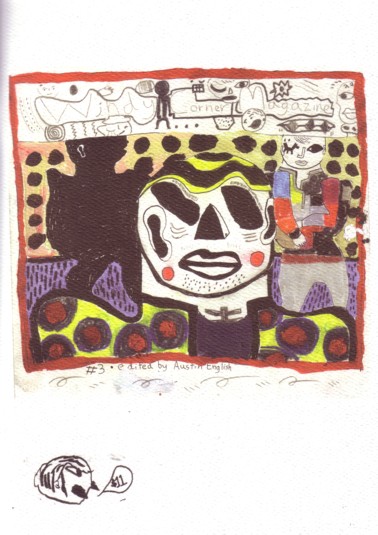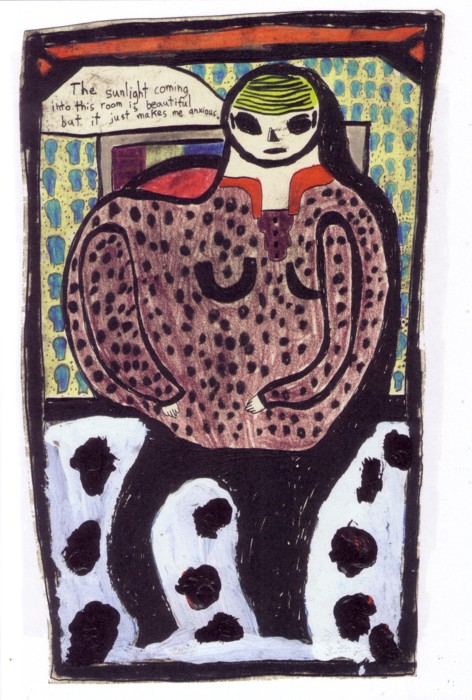I genuinely do not know where to start with this one. How a book with 280 pages (give or take) doesn’t have a wasted panel in it? How it starts off like a fairly simple story of the few remaining survivors of civilization (years after the fall) and balloons out into a complex, terrifying tale? The fact that so many answers are given with so few words? Not that it’s a wordless comic; far from it. Just that some of the most important scenes don’t have a lot of chatter involved. OK, how about this: the book starts off with a young man casually walking through a field. He’s trying to call out for his brother, and we spend several pages seeing his hunt. Finally he sees his brother struggling with an animal, and we learn later that his brother has killed a dog for the sake of trading it to the only local merchant. Why does he so casually kill a dog? Because he’s never learned that dogs (or cats) were around for anything other than meat and their skin. So clearly it’s been awhile since the end of the world, but we’re never given a solid reason for why it happened. It’s irrelevant, really. Civilization has fallen, this is what’s left. The brothers bring this dog to their father, who chastises them for the method of killing the dog, their lack of preparation in keeping it fit for trade, etc. We soon see that he is hard on these kids constantly, but it’s because he’s trying his best to keep them alive in this harsh, unforgiving world. There’s an unpleasant but successful interaction with the trader, the boys make a few attempts to read the journal that their father is keeping (neither has learned to read) and the bulk of the remainder of the book deals with their ongoing attempts to get somebody, anybody, to read the book for them. Along the way we get to see more of this world, and the more we see, the worse it gets. It’s goddamn horrifying at times, and once you pass a certain part of the book the tension is pressing and constant. I don’t know if this book won any awards (Gipi is an Italian artist and this is apparently his second book), but it should have. I’ve been flipping back through various scenes since I finished it, and that’s not the norm with me and graphic novels. Give it a look, I can’t recommend it highly enough. $29.99
English, Austin – Windy Corner Magazine #3
April 23, 2010Windy Corner Magazine #3 edited by Austin English Now available! $10
It’s good to be reminded on a regular basis of just how wrong I can be. I’ve been bitching lately about the lack of readable contents pages for anthologies and how I just want to know who did which strip. This issue starts with a remarkable series of images by Lille Carre and goes seamlessly into a table of contents drawn by Molly Colleen O’Connell. There are no page numbers, the actual information is strewn about the page… and I went away from the pages knowing exactly who did what and where. Kudos. Granted, once you get past those first few pages there are fewer contributors this time around to keep track of, but it’s nice work all the same. Austin gets most of the, um, page time in this issue, as well he should. First up is part 3 of the Francis story (and I am going to go back and review the first issue soon), which deals this time only with Francis’ mother and her life. After this Austin has a couple of short pieces dealing with Austin’s formative years drawing and a trip to the museum between a father and his daughter (mostly dealing with their relationship). Sakura Maku is up next with a series of vibrant pieces about a brassiere museum, dying and being turned into a tree and a guy who was briefly married to Janet Jackson. In other words, you’ll need to read it for yourself. Jason T. Miles then draws a letter to the magazine from Jesse McManus, which is mildly odd because Jesse could certainly draw it himself, but Jason has a unique way of interpreting it. Finally there are the text pieces, as Austin talks about Garth Williams (an illustrator who influenced him greatly growing up), Frank Santoro has a review of Garage Band by Gipi (reminding me once again that what I do here is a poor substitute for actual, in-depth reviews), and Vanessa Davis interviews Carol Tyler. I’d probably pick up #2 before #3 if I just had $10 to spend, but there’s plenty in both of these issues for all comics fans. Unless you just hate Austin English for some reason, but I don’t see how that would be possible. $10





 Posted by Kevin
Posted by Kevin 






